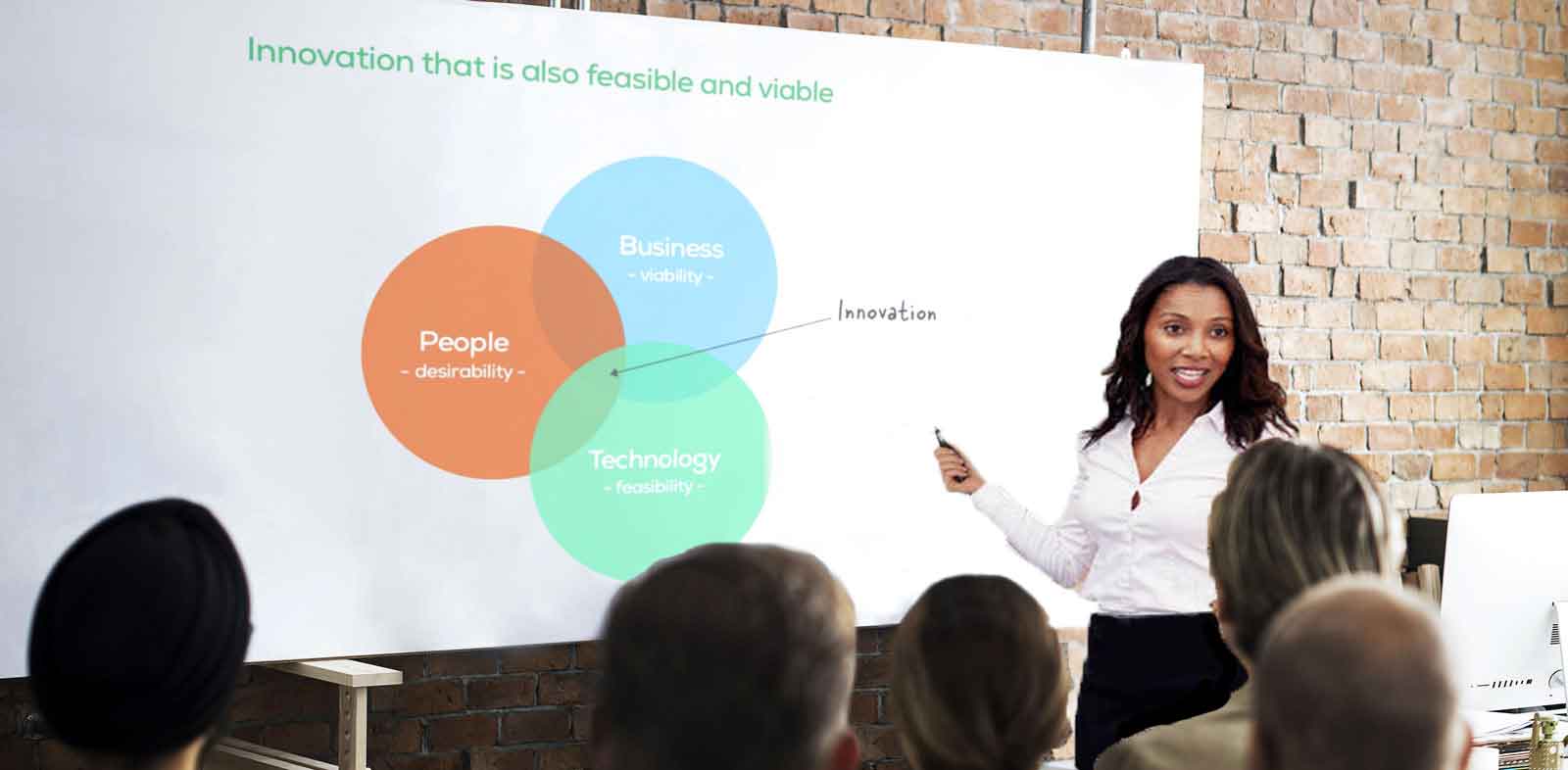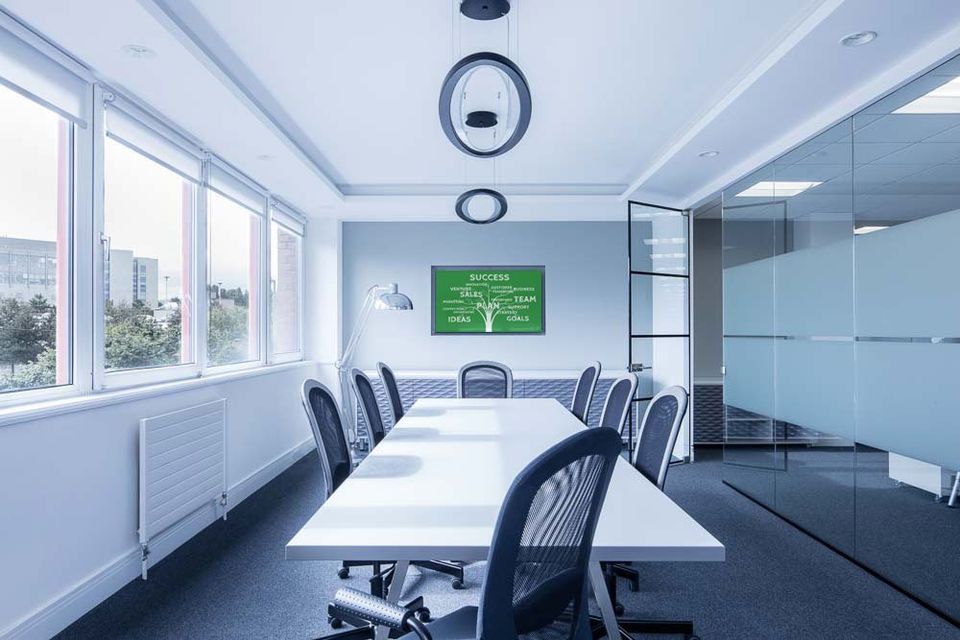Presentation Tips from Clearpresso
Website Editor • February 26, 2020
Presentation Tips with Ed Fidgeon-Kavanagh

Scriba is more than just a stylus: it’s a handy presentation remote that provides discreet haptic feedback when you’re running out of time and lets you annotate your presentation on the fly to better communicate your point. Since we love great presentations here at Scriba we asked Ed Fidgeon-Kavanagh, Chief Presentationist at Clearpreso, for his top presentation tips.
Use The Tool That Works Best For You
Presentations are an exercise in getting a message from your head onto a screen, it’s not really any more complicated than that, and as such there’s not really a “right way” to go about doing it. I think that people should just the use tools and methods they’re most comfortable with whether that be Powerpoint, Keynote, a flip chart or indeed no visual aids at all. Life’s too short to waste time trying to use tools that suit someone else.
Give A Shit
“It’s either a hell yeah or no” — Derek Sivers
Throwing together a crappy presentation is easy, conversly creating a great one is actually really hard and will take a lot of time and effort. So a key factor is that you really give enough of a shit to put in those hard hours. If you don’t care or you’re not excited about the story you have to tell then just don’t bother, a crappy presentation is almost always worse than no presentation at all.
Steal Design From All Around You
“Good artists copy; great artists steal” — Steve jobs
When it comes to designing presentations most people recreate what they have seen before. This is why slide design hasn’t evolved much past the much hated but oft seen slide with endless tiny bullet points. Because of course, that’s how presentations should look right? Wrong.
To end the cycle of crappy presentations it’s necessary to abandon Powerpoint-world and consider examples of good design that can be seen around you in day to day life. Billboards, posters, magazines, websites and even pamphlets in the post all offer better examples and design elements to inspire you than almost all Powerpoints. There are lots of ways to archive the bits and pieces you come across, I take endless screen shots of great design I see online, and snap photos of design I see in the physical world around me. These all end up in a folder I have titled “Inspiration”. At the start of all new projects I have a flick through that folder to get my creative juices flowing.
Stay Away From Gimmicks
Most slide software now comes with a dizzying array of animations, transitions and other sparkly design gimmicks. In general it’s best to steer clear of all of these completely as they almost universally distract from, rather than compliment, your messaging.
Attempting to bring your boring content to life with “exciting” gimmicks just doesn’t work. And in general if the best thing about your presentation are animations and transitions… you should really start from the beginning again!
Slide Count Is Completely Unimportant
Father Ted “Would you like your pizza cut into 6 or 8 slices?”
Father Dougal: “Oh just 6, I don’t think I could eat 8”
People have a strange psychological relationship with “slide count”. I often hear clients tell me that they need a “max 10 slide presentation because I don’t want to bore people”. This adherance to a strict, and totally arbitrary, number of slides actually almost always actually ensures the boredom they were looking to avoid because in the quest to hit the magic number people start cramming 3 slides worth of material into one slide making for a set of slides which are cramped, incomprehensible and completely unengaging.
The best advice here is to broadly keep slides to one idea per slide. Less is more when it comes to content on an individual slide, which may mean you have what seems like a gigantic number of slides, in practice though they’ll take exactly the same amount of time to deliver, but will be much more effective and engaging.
Articles

The United Nations has described the disruption to education caused by the pandemic as ‘unparalleled’. At the virus’ worldwide peak in April, it is estimated that over 90% of all enrolled learners, from kindergarten to bachelors and beyond, had their education affected by school closures and the pandemic (UNESCO). For many university students and older children, they have had to adapt quickly to online learning. They can keep in touch with their peers and teachers online and continue their studies, albeit in a highly modified way. As challenging as this may be, this experience will help equip them for a future that is increasingly online. For parents of younger children, they are assuming a new role: their child’s home school teacher. This is in addition to their usual childcare and household duties, their work responsibilities and often emotional and financial worries caused by the pandemic. Stressful? Yes. The good, and somewhat surprising, news? The experts advise that you don’t teach your children - at least not in the way you might expect.

If the recent outbreak of Covid-19 has taught us anything, it's that many adults do not wash their hands effectively. It has never been more important that we support our children to develop good personal hygiene to keep themselves and our families safe. This seemingly easy task can be very difficult for children with fine motor skill difficulties. In this article, we explore some ideas to support your child with hand washing.

Lockdown has brought the digital future into the now. Online shopping, entertainment, education and more have moved from the periphery to the mainstream to, in many cases, the only option. With the necessity of social distancing looking to continue for many months, it appears that this rapid digital revolution is here to stay. This means that life as we know it, in most of its sectors, has changed forever. In order to survive, businesses are having to adapt rapidly, embrace technology and look to the future. Architecture is no exception. There has been a widespread adoption of technology and VR over the past few months in response to the lockdown across all of society. Elderly grandparents who were once resistant to adopt new technologies talk of “Zooming” and have started video chatting with their family members to combat loneliness. Art galleries that were once considered stuffy or pretentious are now pioneers in VR technology, with Google Art & Culture offering tours of London’s National Gallery or the Musee D’Orsay in Paris. These virtual tours deliver art in a dynamic new way that can be far more engaging than regular photos. Critics have applauded the panoramic and immersive views of gallery building and exhibitions which work well for rendering of 2 dimensional art, however impressions of sculpture is somewhat lacklustre. With VR technology, users can enjoy a truly immersive experience in the comforts, and safety, of their own home. The COVID-19 pandemic has served as an accelerant for the arts and entertainment industries to embrace VR.




